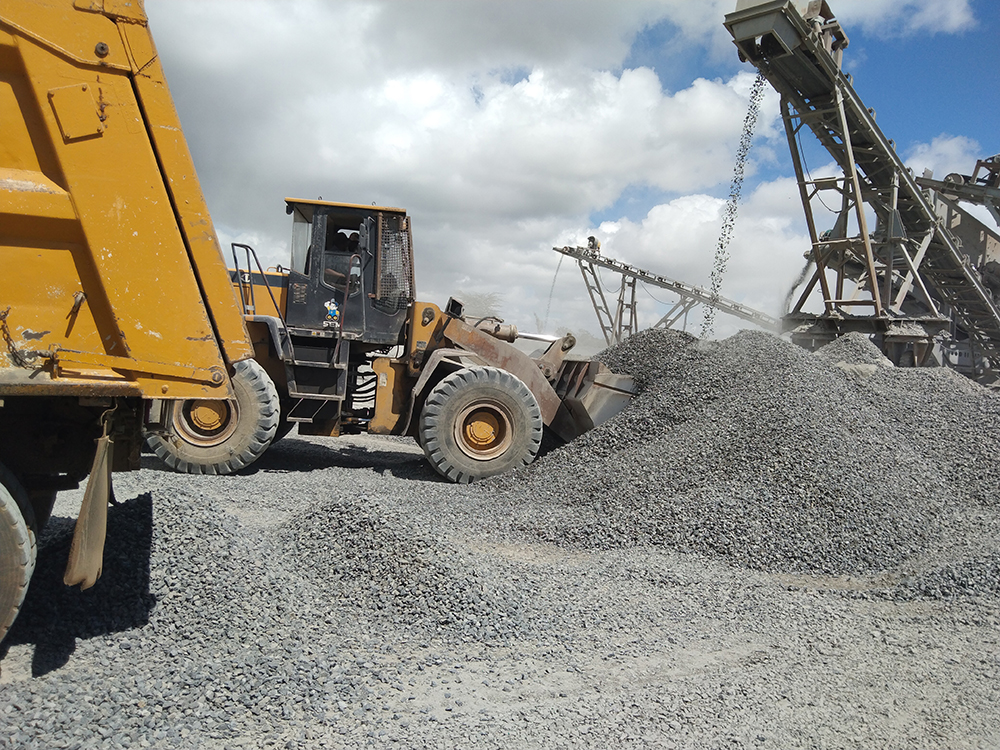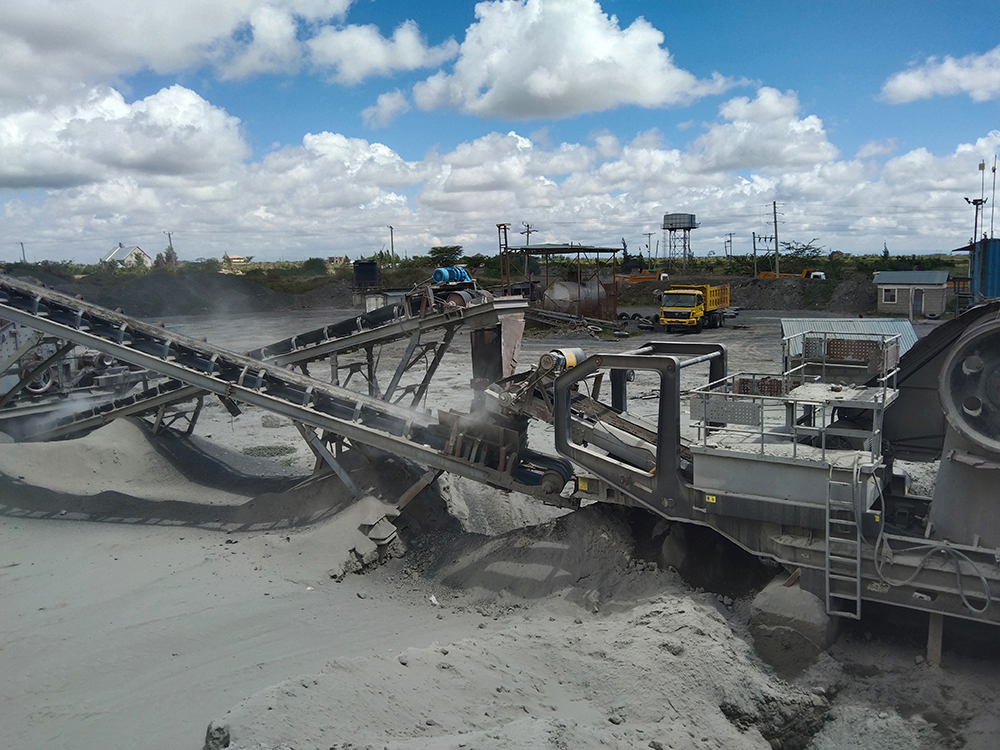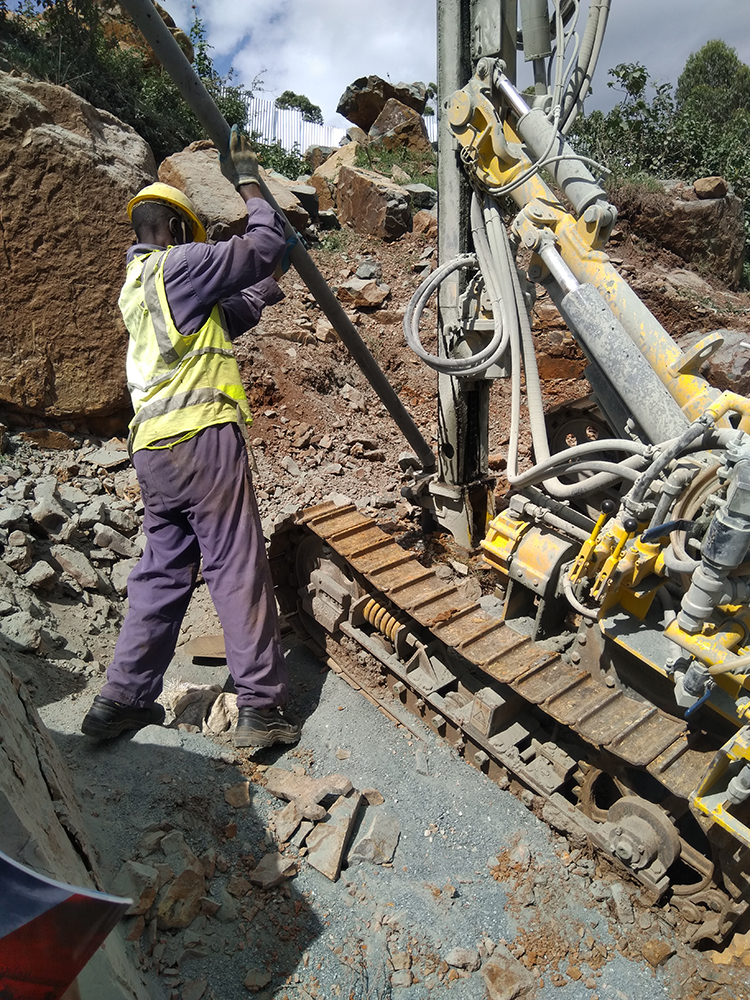
The global COVID-19 pandemic is threatening Kenya’s ambitious infrastructure development plan and taking a toll on its once thriving and booming construction industry.
The Kenyan government had planned to spend an estimated US$60 billion to build infrastructure whilst relying heavily on Private-Public Partnership (PPA) arrangements to make the country an industrialised, middle-income economy by the year 2030.
However, the uncertainty in the construction industry has seen both the government, investors and property developers adopt a wait-and-see approach that has led to the suspension and cancellation of key infrastructure projects across the country.
The country had hoped to roll out projects in various sectors that include transport and infrastructure, energy, health, education, water and environment, housing and manufacturing by the middle of this year.

The projects were expected to drive demand for raw aggregate materials. However, the outbreak of the COVID-19 pandemic that saw the government introduce lockdown and health and safety measures has seen aggregates suppliers staring at a bleak future as both international and local investors shy away from deploying funds for investments.
In Kenya, like other east Africa countries, the impact of the pandemic is widely pronounced. Most of the local aggregates suppliers who provide raw materials such as sand, ballast, asphalt, cement and quarry stones have laid off their employees or downsized their operations, while others have closed shop.
According to anecdotal evidence around quarry mines and construction sites in Nairobi City and its satellite towns, activity levels are dismal as construction takes a back seat due to the pandemic.
“We are doing about 300 tons of ballast per day, which is far too low compared to our capacity of 150,000 tons before the pandemic,” laments John Njoroge, a bulldozer operator at Katani ballast crushing plant, Machakos County.
Njoroge says demand for ballast aggregate has drastically fallen since the government announced lockdown and safety measures to contain the pandemic. “We used to crush ballast on a daily basis, but now we do it once a week depending on how many trucks have lined up in our parking lot,” regrets Njoroge.
The negative ripple effects have not only taken a toll on aggregates crushing plants and quarry miners but also on contractors and aggregates suppliers.
“We haven’t resumed normal operations yet. Most of our clients have put on hold some of the projects citing the high cost of building materials and unwillingness by financial institutions to lend money during this pandemic,” says Michael Musyoka, a contractor and a real estate developer who has secured a contract to build a three-storey building in one of Nairobi’s upcoming estates.
Musyoka expressed optimism that the sector will shake off the effects of the pandemic in the long term. “In the last two months, we have received a couple of enquiries from clients, an indication that the sector is slowly bouncing back.”
The situation has seen industry players express fears that the pandemic could reverse the gains made over the years and derail mega-infrastructural projects key to accelerating Kenya’s economy.
Over the years, Kenya has invested heavily in its infrastructure development, and it has reported significant growth rates in the construction industry.
In 2019 the sector contributed 5.6% to GDP. Its real estate sector recorded an average growth rate of 5.3%, which was 1.2% points higher than the 4.1% growth rate recorded in 2018, according to Kenya National Bureau of Statistics (KNBS) economic survey 2020.
However, the declining growth rate and continued uncertainty in the market that has left multi-billion projects hanging in the balance has seen industry players cast doubt on the industry’s future.

A wheeled loader at work at a Kenyan aggregates processing site
Onesmus Gichwiri, a quantity surveyor and a former chairman of Kenya Joint Building Council, told Aggregates Business International that there had been a negative impact on the supply chain as most developers source construction materials from China.
“We are experiencing unprecedented times where environment, engineering and construction companies are laying off employees and downsizing their operation as the market continues to shrink owing to the pandemic,” observed Gichwiri.
Gichwiri notes the situation has seen payment delays due to stalled or suspended construction projects and extended timelines. Banks have been reluctant to lend to investors owing to the current uncertainty in the market.
The disruption in the supply chain has seen delayed completion of projects and longer sales cycles for suppliers as developers reconsider or slow the pace of investments.
“When there is no market, investors will definitely hold back until the market stabilises. With stalled projects, it takes longer for developers and banks to recoup their returns,” said Gichwiri.
Though the Kenyan blueprint identifies infrastructure as an enabler for economic development, several reports have cast aspersions on the construction industry’s future.
A study by the Institution of Engineers of Kenya (IEK), titled Engineering: A post-COVID future, about the impacts of COVID-19, warns that reducing financing threatens the viability of private-public partnership projects, a model the government has adopted to fast-track implementation of infrastructure projects.
The report warns that as funding sources shrink, the formula for distributing the road infrastructure funds amongst the various agencies will also need rethinking.
“Uncertainty in traffic volumes arising from COVID impacts could impact the terms and conditions of those agreements and especially the contract duration that is expected to be 15-20 years,” says the report, authored by Margaret Ogai, general manager planning and programming, Kenya Roads Board.
The government, through this arrangement, aims to mobilise approximately US$1.85 billion in the 2020/2021 fiscal year by concluding the financing of several projects that are currently at an advanced stage of negotiation.
The country had listed several projects to be rolled out under the PPP model, which include the ongoing construction of Nairobi Expressway with an investment value of US$ 550 million – the country’s first double-decker road, Nairobi-Nakuru-Mau Summit Highway, the second Nyali Bridge, and Lamu-Garissa-Isiolo highway, among other projects.
Kenya is largely reliant on external funding for public infrastructure projects. As of 1 June 2019, China accounted for 20.9% of East African project funding, with government funding at 13.7%, international finance institutions at 13.2% and regional development finance institutions at 12.6%.

In the past decade, over 70% of Kenya’s large public-sector infrastructure projects have been awarded to Chinese civil engineering and construction companies that source some of the construction aggregates materials locally.
Other reports also paint a negative picture of the state of the construction industry.
Data from Nairobi Metropolitan Services (NMS), a state authority created to manage Nairobi County and mandated to issue permits and planning approvals for construction, cites reduced activities in the construction sector.
The authority received a paltry 970 building applications and 664 planning applications in the second quarter of 2020, representing a 20.3% decline in construction activities.
According to a survey conducted by the Architectural Association of Kenya (AAK) between July and December last year, titled Status of the Built Environment Report, the sector witnessed sluggish growth.
The report revealed that a total of 87.5% of professionals in the industry had experienced a significant decrease in client enquiries for new projects. Another 70.1% reported a decline in communication about or follow-up of ongoing leads.
The report further notes that only 4.5% of the former and 3.4% of the latter reported an increase in the number of prospective client enquires for new projects and ongoing leads.








